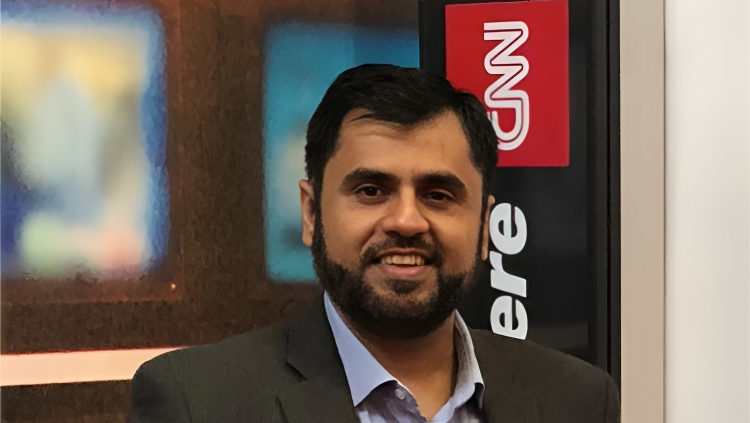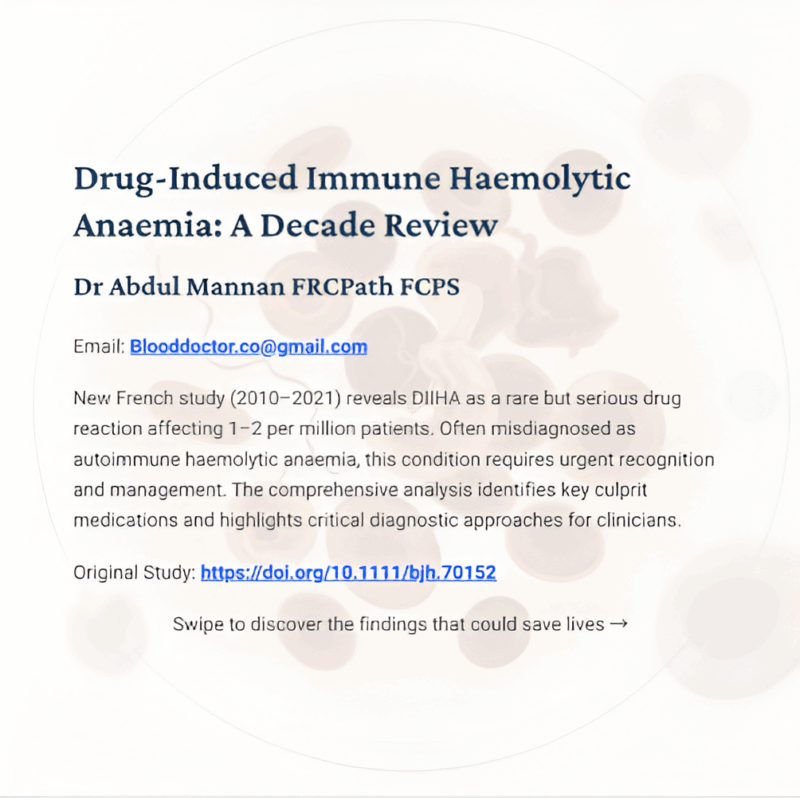
Careful Drug History is Key: Dr Abdul Mannan on Diagnosing Drug-Induced Immune Haemolytic Anaemia
Dr Abdul Mannan, Consultant Haematologist at Betsi Cadwaladr University Health Board, posted on LinkedIn:
”Sometimes diagnosing drug-induced immune haemolytic anaemia (DIIHA) feels like chasing a unicorn among zebras. What looks like a straightforward AIHA can suddenly turn on its head when a culprit drug is revealed.
A decade of pharmacovigilance data from France has now reminded us that the “usual suspects” (antibiotics, anti-inflammatories, etc.) are no longer alone – immune checkpoint inhibitors have officially joined the list.
The lesson is clear:
Never underestimate the power of a careful drug history.
A positive DAT is not the end of the story – it’s the start of the detective work.
Always challenge your diagnostic assumptions before risking re-exposure.
As our therapeutic toolbox expands, so too does the responsibility to spot these rare but serious events. Grateful for the international haematology community that keeps pushing vigilance forward and protecting patients.”
Read the full article here.
Title: A decade of pharmacovigilance in France: Immune checkpoints join the list of usual suspects for drug-induced immune haemolytic anaemia
Authors: Guillaume Brenac, Anne Dautriche, Romane Freppel, Anthony Facile, Bruno Revol, Mathilde Beurrier, Bernard Bonnotte, Sylvain Audia

Stay updated with Hemostasis Today.
-
Dec 19, 2025, 06:13Anna Aldehag Reflects on Her 12 Year Leadership in Sweden National Board of Health and Welfare
-
Dec 19, 2025, 05:54Abdul Mannan: APTT Mixing Studies Confuse a Lot of People
-
Dec 18, 2025, 23:14The “Normal” FVIII Level Trap in Females with Haemophilia
-
Dec 18, 2025, 23:11WFH Expands Multidisciplinary Bleeding Disorder Training in Vietnam
-
Dec 18, 2025, 17:13Daria Camilli on EuroBloodNet and EHC Collaboration for Bleeding Disorders
-
Dec 18, 2025, 16:50Marie Cambot on Innovhem’s Quantification of The HbF/HbS Ratio for SCD
-
Dec 18, 2025, 16:26Yogesh Rathod on Hematological Issues and ICU
-
Dec 18, 2025, 16:09Carlos Doti: I’m Reminded Why ASH is Such a Powerful Close to The Year
-
Dec 18, 2025, 15:23Michael Hadley: Well-Timed ACC Statement Just Out in JACC Journals
